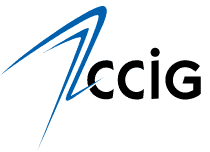Contribution to climate action
The Geneva Chamber of Commerce, Industry and Services is committed to taking urgent action to combat climate change and its impacts. It supports companies in keeping pace with evolving cantonal, national, and international regulations, and assists them in achieving carbon neutrality. Additionally, the institution collaborates with the Haute École de Gestion de Genève to organize Sustainable Management Meetings, which have a dual objective: promoting sustainable management and facilitating the exchange of practical experiences among businesses.
Thematic actions
Energy
The Geneva Chamber of Commerce, Industry and Services is committed to ensuring access for all to reliable, sustainable, and modern energy services at an affordable cost. Additionally, it aims to improve energy efficiency and promote energy sobriety while supporting the energy transition.
Footprint and emissions by scope
2050Today’s greenhouse gas (GHG) emissions measurement methodology follows the GHG Protocol. The Protocol provides standards and guidance for organizations to measure and manage climate-warming emissions. It was created in 1998 through a partnership between the World Resources Institute (WRI) and the World Business Council for Sustainable Development (WBCSD).
According to the GHG Protocol, the distribution of emissions is done by scopes:
Scope 1 represents direct emissions linked to the consumption of fossil fuels.
Scope 2 represents indirect emissions from the generation of purchased electricity, steam, heating and cooling consumed by the reporting company.
Scope 3 includes all other indirect emissions that occur in a company’s value chain (i.e. purchased good or services, business travel, employee commuting).
The 2050Today carbon footprint takes into account the reported emissions generated by the activities of the institution over one year and is divided by categories:
Energy and water
It takes into account the amount of the consumed electricity produced and purchased by the institution. The energy consumed to heat and/or cool the institution’s building area and the consumed water are included as well.
Mobility
It takes into consideration business travels and commuting (on a survey basis).
Food
The CO2 impact of food includes the catering of the institution and individual consumption (on a survey basis) during working hours.
Purchased goods
The perimeter of purchased goods is set to a list of new office equipment, new mobility equipment (vehicles) and construction materials.
Waste
The perimeter of the waste inventory is set to waste production from facilities and internal operations of the institution
It has to be noted that the collected data of the 2050Today members resulting in each carbon footprint are not yet fully standardized and might not be entirely complete. Data collection is being progressively harmonized and improved. Therefore, direct comparisons between tCO2 / employee among institutions – be it in general or per sector – are not yet possible nor relevant.
To ensure the reliability, the accuracy and a recurrent updating of the carbon footprint assessment, 2050Today is advised by an international Carbon Footprint Scientific Committee.







